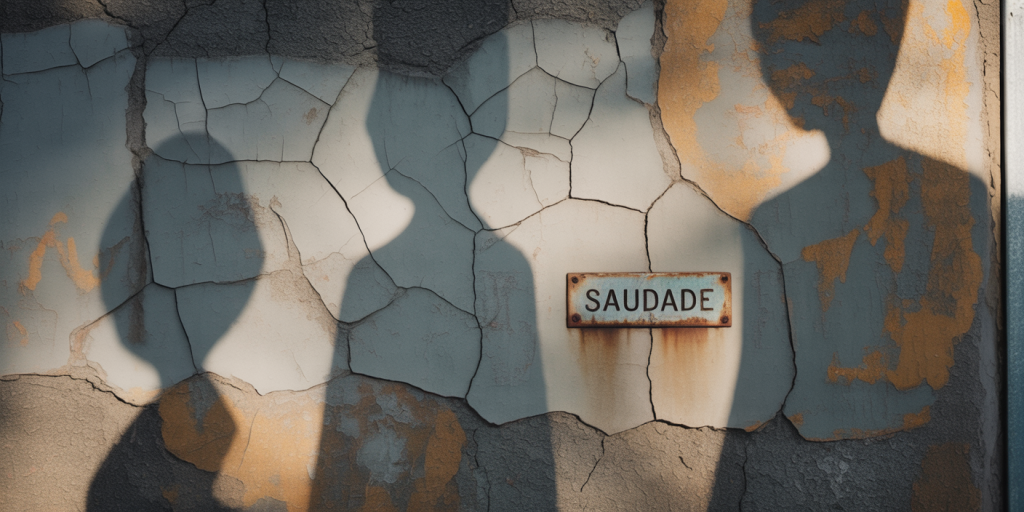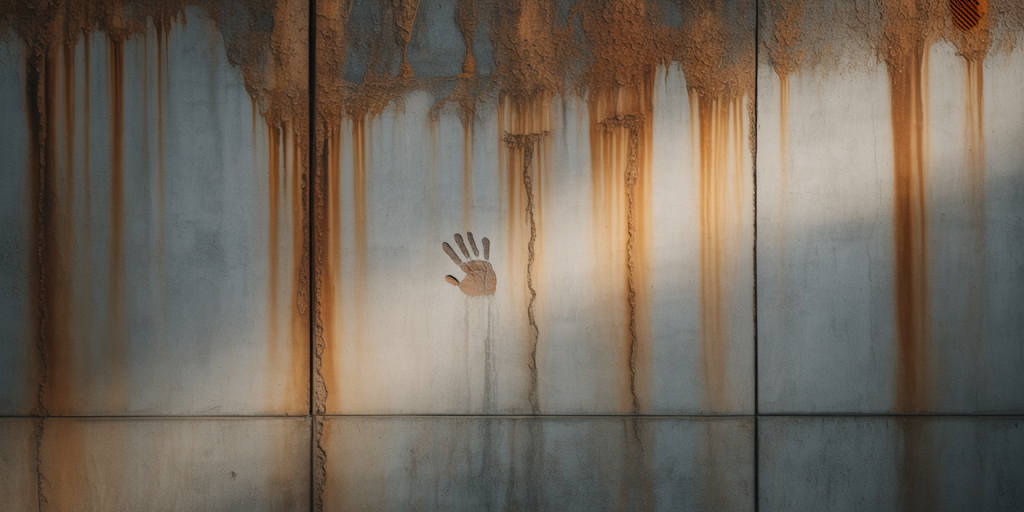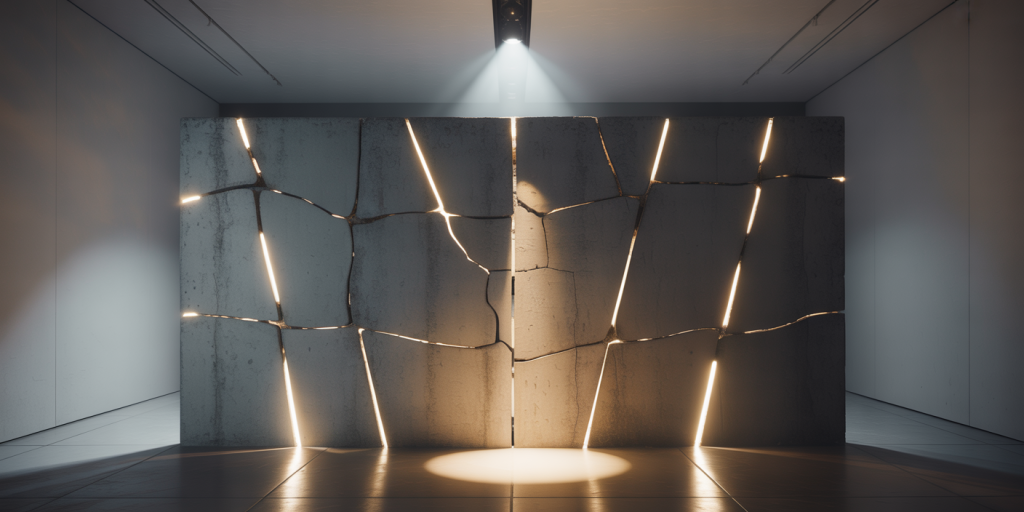When Lygia Pape Listened to the Walls Speak
Contemplative Opening
There are voices that live inside silence. They vibrate through bricks, seep through cracks, murmur between layers of peeling paint. Lygia Pape, with eyes that touched and ears that saw, taught herself to listen to these voices—the ones that architecture didn’t plan, but history, friction, and longing etched.
When she listened to the walls speak, she didn’t hear words. She heard breath. She heard bodies. She heard resistance. Each concrete wall became more than structure—it became skin. A skin that bruises. That bleeds light. That holds time like a wound refusing to heal.
Table of Contents
- The Murmuring Surface
- Urban Skin and Invisible Scars
- Shadows as Memory
- The Geometry of Absence
- Echoes in Concrete
- Where Light Touches Silence
- Texture of Protest
- The Body that Walks the Wall
- Time Etched in Dust
- Rust and Resistance
- Between Ruin and Rhythm
- Drawing with Emptiness
- Sensing with the Chest
- The Color of Dry Breathing
- Fractures that Speak
- The Architecture of Listening
- Stillness is Political
- Openings that Reveal
- The Sacred in the Worn
- Final Gestures Toward the Invisible
The Murmuring Surface
The wall is not mute. In Pape’s gaze, the wall breathes. It trembles with what has passed through it—whispers of history, heat of bodies leaning, footsteps that brushed its base. The surface is never flat. It carries vibrations from the inside out.
This sensory perception is fundamental to her poetics: she invites us not just to look at, but to listen with the eyes, feel with the memory. The murmuring surface is not just seen—it is inhabited.
Urban Skin and Invisible Scars
Walls, for Pape, are skin. They age. They stain. They remember. The peeling paint becomes symbolic of society’s layers—each layer once vibrant, now flaking, exposing contradictions and truths. The city’s epidermis is marked by violence and resilience alike.
We read this skin not as a passive canvas, but as an active memory field. These are scars that have no bandages. They remain as witnesses.
Shadows as Memory
Light alone cannot define space—it’s the shadows that preserve its memory. The interplay of light and shadow on urban surfaces in Pape’s work evokes ghosts. What isn’t there still echoes. The absent figure leaves its print in shadow form.
The shadows suggest lives lived alongside walls—people leaning against them, slipping behind corners, vanishing. These presences remain in silhouette, like fossils in the air.
The Geometry of Absence
Pape’s compositions often play with absence as form. A line that does not close. A space left unpainted. These geometric absences are not voids—they are pulsating. They breathe between the structure, asking to be completed by the viewer’s presence.
Geometry becomes emotional. The line becomes longing. The square, a silent scream.
Echoes in Concrete
Concrete holds voices, especially when cracked. In her perception, every fissure in a wall is a throat. The deeper the fracture, the more it speaks. These aren’t mere physical damages—they are vocal cords of the city.
And Pape listens. She listens to cracks the way others listen to music. Each variation in texture becomes a new tone in the city’s secret symphony.

Where Light Touches Silence
There’s a fragile moment in her work where light touches wall and turns silence into gold. The illumination is never harsh. It slips gently across rough surfaces, revealing stories written without ink.
Light becomes an accomplice. It doesn’t expose, it reveals—slowly, respectfully, like someone opening a diary without breaking the spine.
Texture of Protest
Many of the surfaces Pape captures or evokes carry the texture of protest—not in graffiti, but in friction. The wall rubbed by hands, the dust moved by breath, the nail scratch left in passing. Her texture is human. Her material is encounter.
The wall here is not where protest is written—it is where protest happens. In silence. In remaining. In refusing to fall.
The Body that Walks the Wall
One cannot experience her work from a distance. It demands that the viewer move, approach, circle. The wall becomes a path. The viewer, a walker. Each step beside a Pape wall is a gesture of participation.
This is not passive art. It is a physical choreography of perception. The body becomes brushstroke. The walk becomes drawing.
Time Etched in Dust
Dust is time that stopped moving. In the works of Pape, dust is sacred. It rests on walls like a veil. It holds particles of everything that passed: people, conversations, weather.
Her sensitivity transforms dust into a poetic element. What others clean away, she honors. Dust becomes inscription. A gentle, ancient calligraphy.
Rust and Resistance
Rust is a slow protest. It eats structure, but quietly. Pape sees rust not as decay, but as endurance. It shows that time does not forget—that even metal bleeds when silenced.
The orange hues of corrosion become symbols of resilience. They are not stains—they are testimonies.
Between Ruin and Rhythm
There is a rhythm in ruin. A cadence in the cracks. Pape captures the poetry of what breaks slowly. Her walls don’t collapse—they unfold. They reveal themselves layer by layer, beat by beat.
Ruin is not failure in her gaze. It is a form of transformation. Of resistance. Of rhythm carved in matter.

Drawing with Emptiness
To draw is not only to add. It is also to subtract. Pape teaches us that emptiness draws too. A blank space on a wall says as much as any mark. Silence, after all, is a form of sound.
This emptiness is not lack—it is presence. It is what remains after everything unnecessary is stripped away.
Sensing with the Chest
You do not understand Pape with your eyes. You understand her with your chest. Her works enter through the breath. You feel them as one feels cold on the skin, or sorrow behind the ribs.
Her art is tactile without touch. It grazes the body invisibly. It awakens sensory memory—of warmth, of roughness, of time.
The Color of Dry Breathing
Colors in Pape’s visual poetics are subdued. They breathe dry. Ochres, dull reds, faded whites—they are tones that remember more than they show. These aren’t decorative colors. They are emotional temperatures.
Each hue is a season. Each patch of color a whisper from something once alive. They pulse with memory.
Fractures that Speak
In her walls, fractures are never mute. A crack can be a voice. A peeling layer, a syllable. What appears broken is, in truth, in dialogue—with time, with violence, with forgetting.
Pape reminds us: sometimes, the most eloquent speech is delivered by a surface that can no longer hold together.
The Architecture of Listening
Listening is an architecture. Pape constructs spaces for the ear, not just the eye. She guides us into listening to space—not acoustically, but emotionally. The walls she listens to are thresholds for interiority.
She teaches us to lean close. To let the material speak before we define it. To be patient. To be quiet.
Stillness is Political
In a world that demands noise, stillness becomes resistance. Pape’s silent walls are not passive—they are insurgent. They defy spectacle. They refuse to entertain. They endure.
The stillness of a wall, the refusal to move or respond, is a form of protest. An anchored dignity in a chaotic world.
Openings that Reveal
A slit, a hole, a missing tile—what would be flaw in another’s work becomes revelation in Pape’s. These interruptions in the surface allow us to see something more. To see through.
Her use of small openings becomes metaphorical: for vulnerability, for truth, for that which escapes construction.
The Sacred in the Worn
Sacredness, in her walls, does not lie in grandeur—but in wear. The sacred is the scratch. The grain. The persistence. A wall becomes altar not because it was built—but because it was lived.
Pape finds holiness in abandonment. Devotion in dust. Ritual in erosion.

Final Gestures Toward the Invisible
Pape’s greatest gesture is perhaps that she makes us look at what we were taught to ignore. She elevates the unnoticed. She translates the unspoken. She listens to what we thought was voiceless.
Her works don’t end. They continue inside the viewer. They ask not for interpretation—but for presence.
FAQ – Frequently Asked Questions
Who was Lygia Pape?
A pioneering Brazilian artist associated with Neo-Concrete art, known for her experimental approach to materials, space, and sensory perception.
What does it mean that she “listens to walls”?
This poetic metaphor reflects her sensitivity to space, silence, and memory. She perceives urban walls as living surfaces that carry history and emotional residue.
What artistic techniques did she use?
Pape used mixed media, installations, and minimal geometric elements. Her work is marked by sensitivity to material textures, space, and bodily interaction.
Is her work political?
Yes, though not overtly. Her silence, abstraction, and sensitivity are deeply political, engaging with themes of oppression, memory, and resilience during Brazil’s dictatorship era.
Why are walls significant in her work?
Walls serve as metaphors for memory, boundary, silence, resistance, and the body. They become living surfaces through which history, trauma, and human experience are recorded.
Final Reflections – Breaths That Still Vibrate
To listen to walls as Lygia Pape did is to surrender to a language without vocabulary. It is to know that concrete can mourn. That silence has weight. That decay sings softly to those who will hear.
Her legacy is not in what she built, but in what she revealed. She reminds us that art need not shout. Sometimes, it is enough to listen closely. To a surface. A breath. A wall.
